Step onto Larne's one-mile Promenade at dawn, and Scotland's Mull of Kintyre rises like a phantom silhouette across the North Channel - a reminder of this coastal town's unique perch between Ireland and Britain. Nestled in County Antrim, Larne isn't just a starting point for Northern Ireland's Causeway Coastal Route; it's a place where history collides with serenity. Since the early 20th century, when Henry McNeill launched the world's first organized package holidays here, travelers have been drawn to its rugged beauty and maritime spirit. The town's roots run deep: Raloo Village once hosted U.S. presidents, Viking artifacts whisper of ancient voyages, and Olderfleet Castle guards the shores where Edward Bruce landed in 1315. Today, Larne balances heritage with adventure - fossil hunters scour Waterloo Bay's sands while cliff-edge walkers tackle the Gobbins' dramatic paths just a short drive away.
Whether you're tracing the coastal route toward Giants Causeway's basalt columns or meandering through Carnfunnock Country Park's maze shaped like Northern Ireland itself, Larne offers a gateway to both grand landscapes and quiet discovery. Families flock to its adventure playgrounds and loughside cafes, while history buffs pore over tales of smugglers at Larne Museum & Arts Centre. With Belfast just half an hour inland and Scotland's ferries calling daily, this town feels like the heartbeat of cross-border exploration - where every stroll along that iconic promenade reminds you how close horizons can feel when the sea is your compass.
Jump to section:
Things to See and Do
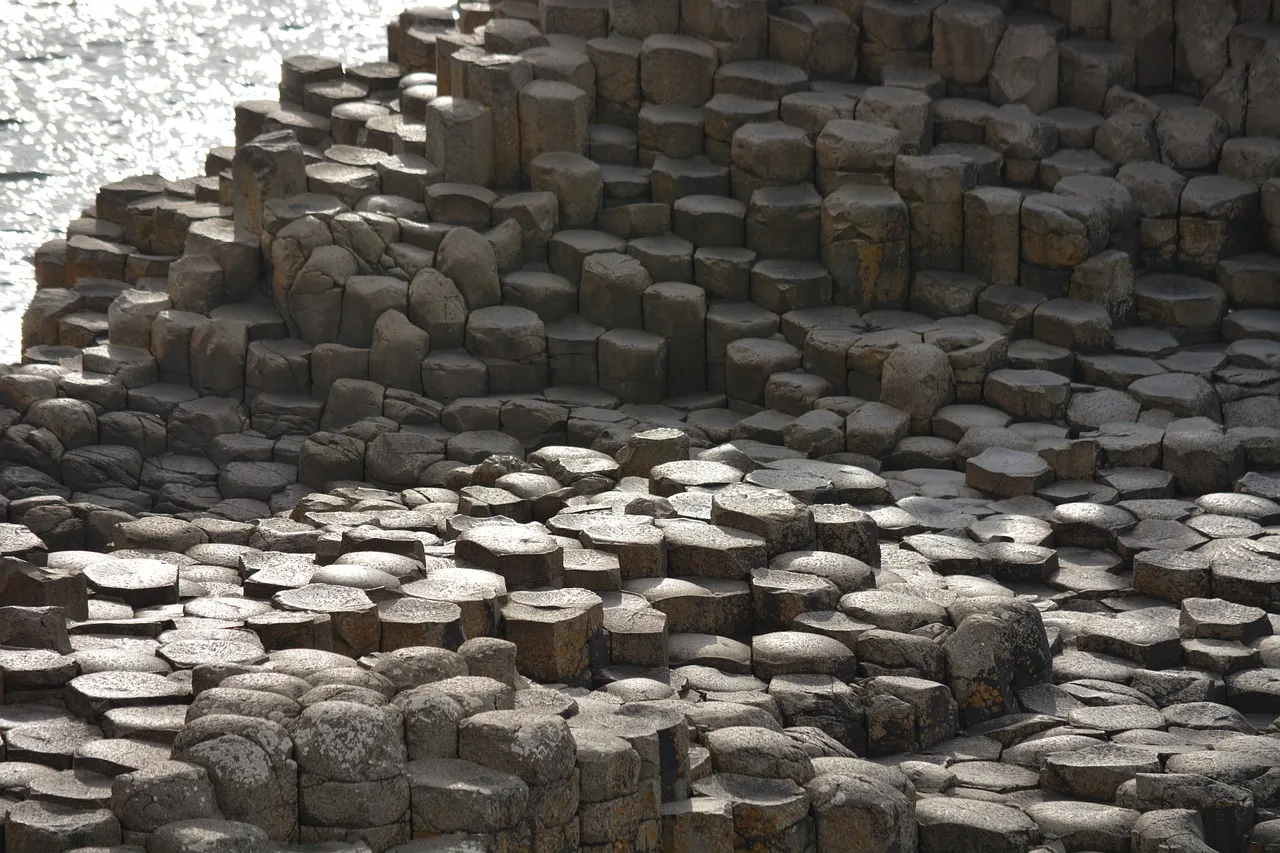
Giants Causeway
UNESCO World Heritage Site with hexagonal basalt columns formed millions of years ago. Offers guided tours and dramatic coastal views.
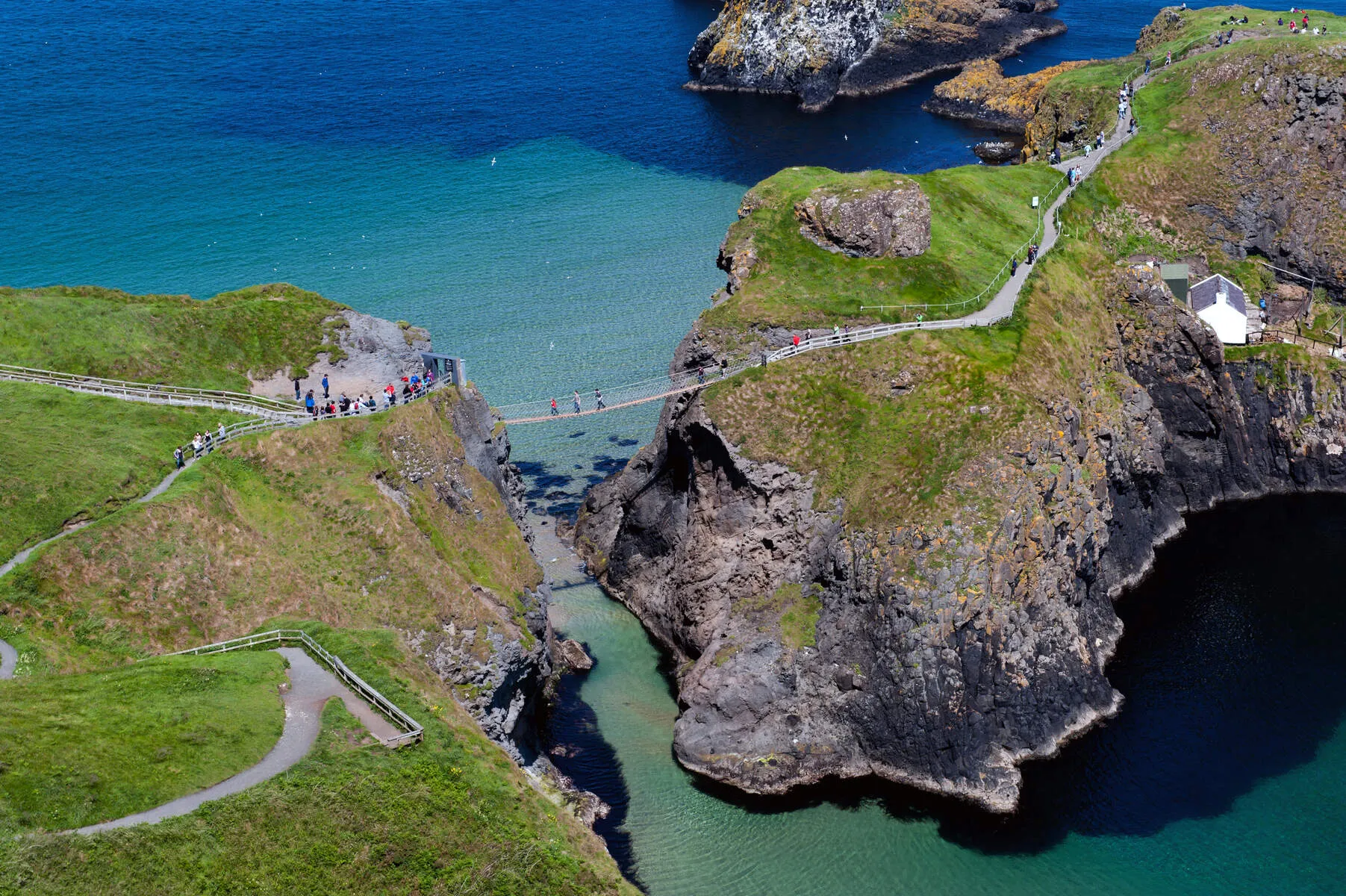
Carrick-a-Rede Rope Bridge
Thrilling rope bridge over churning waters leading to a seabird island. Offers breathtaking views and wildlife spotting.
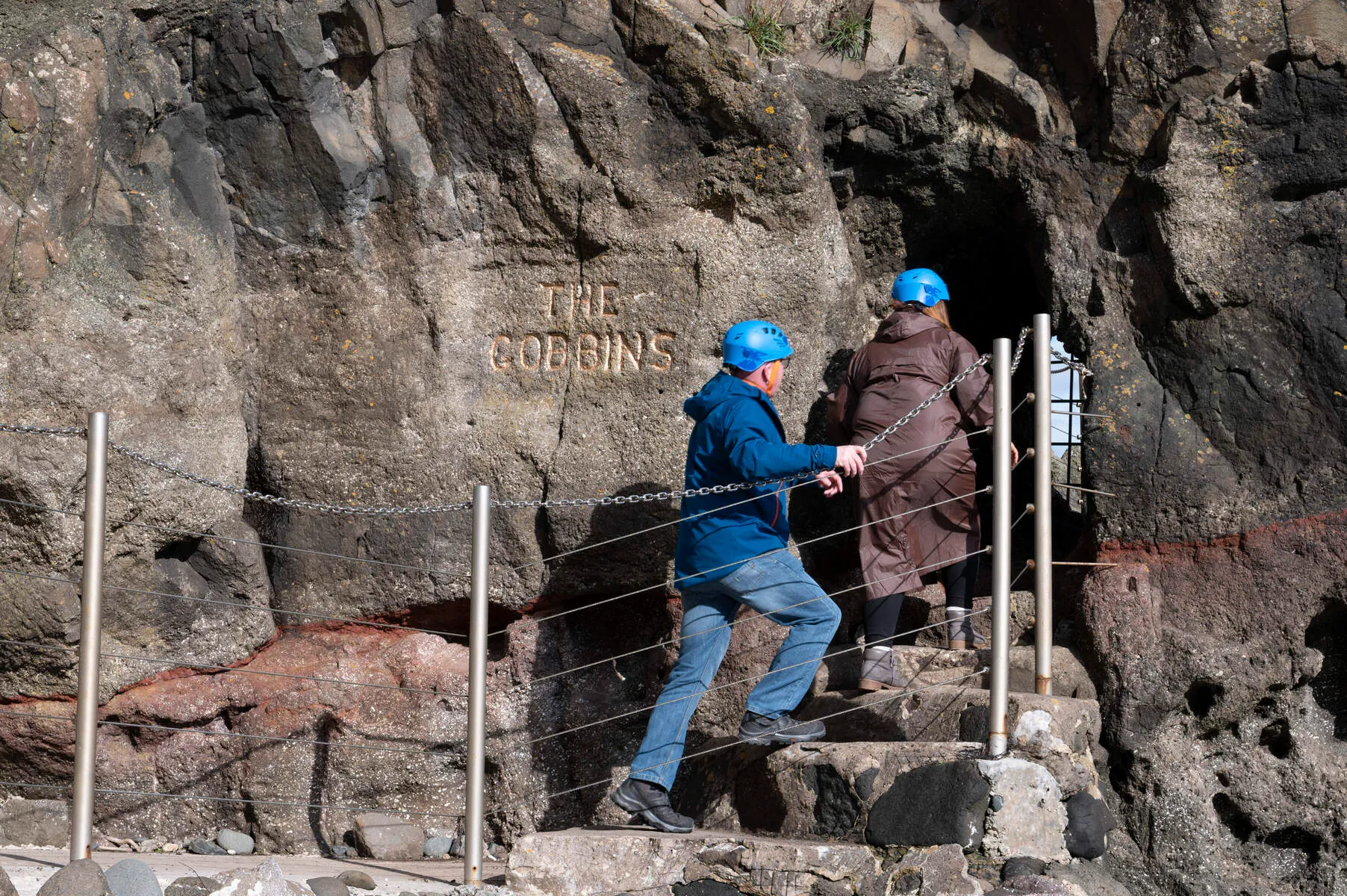
Gobbins Cliff Path
Guided cliff-top walk with narrow paths, rope bridges, and stunning ocean vistas. Seasonal operation with expert guides.

Bushmills Distillery
World's oldest licensed whiskey distillery since 1608. Offers tours of historic facilities and tastings.
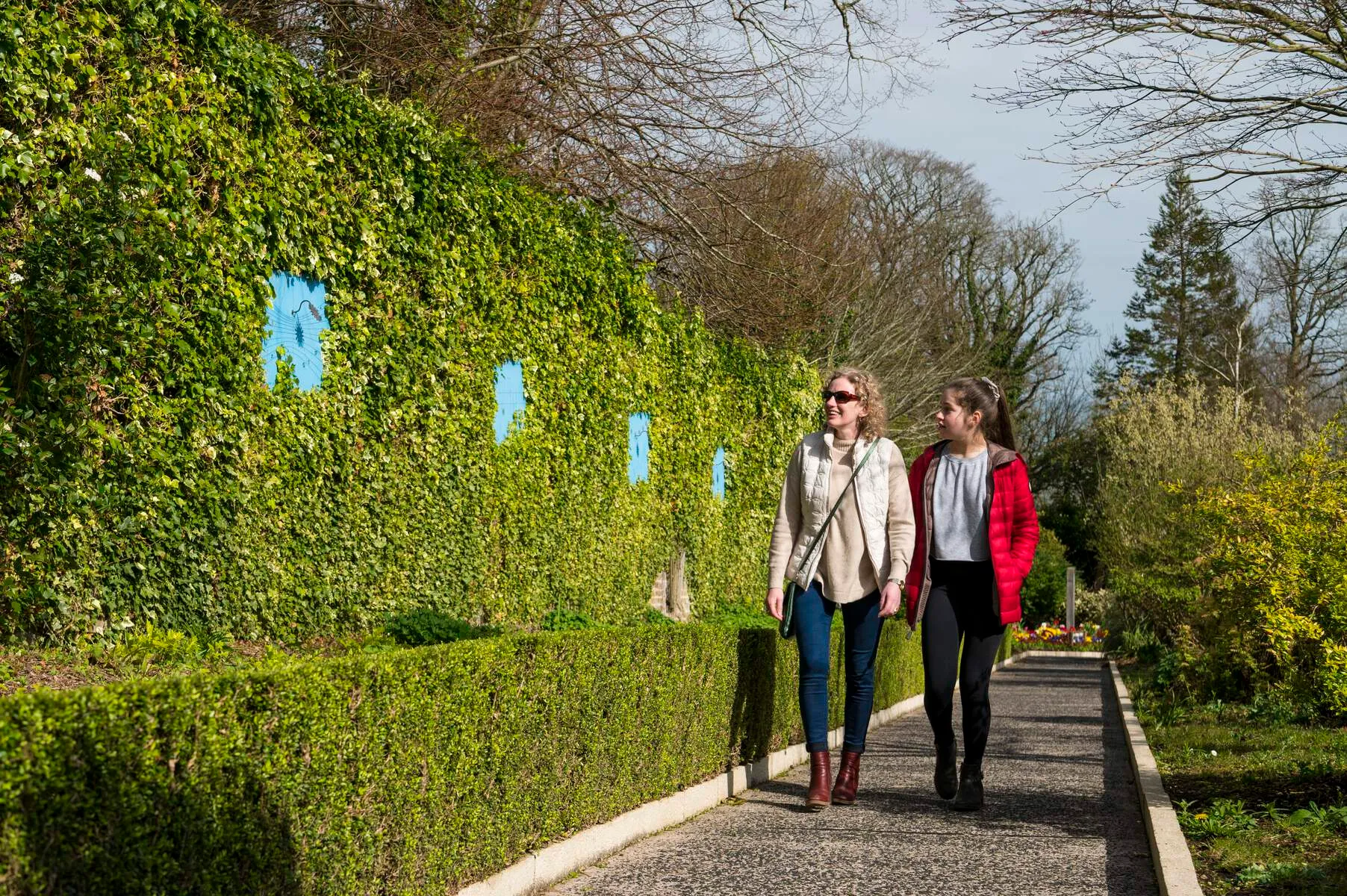
Carnfunnock Country Park
Family-friendly 191-hectare park with woodlands, adventure playgrounds, golf courses, and seasonal events.
Causeway Coastal Route
Scenic route starting in Larne, featuring dramatic coastal views from Game of Thrones and landmarks like Giant's Causeway.
Larne Promenade
Historic one-mile coastal walkway (1902–1934) with sea views, fossil hunting at Waterloo Bay, and landmarks like the lime kiln.
Town Park & Chain Memorial Tower
Two adjacent parks offering panoramic coastal vistas of Scotland and Maidens Lighthouses. Includes a 27-meter memorial tower with stunning views.
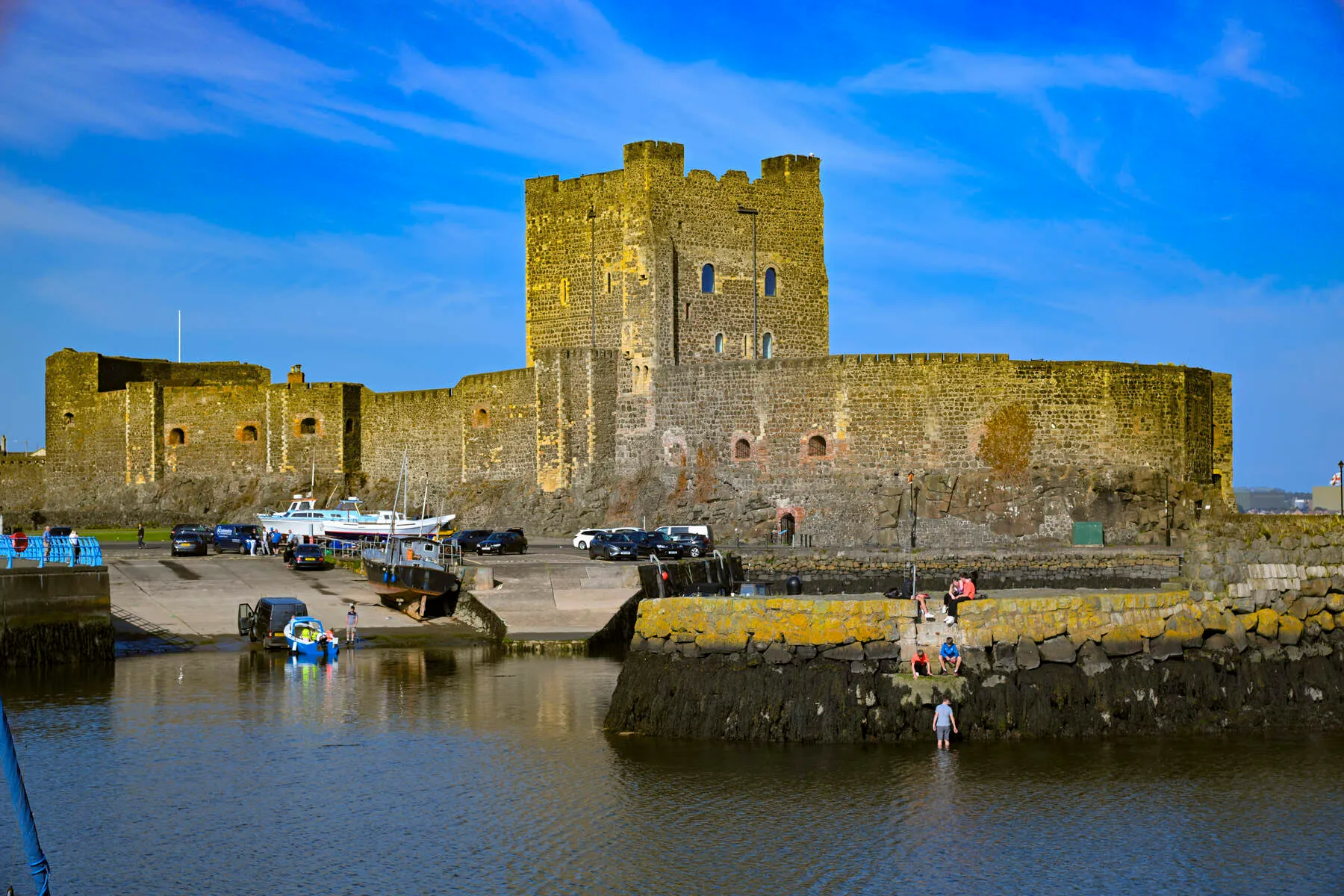
Carrickfergus Castle
Well-preserved 12th-century Norman fortress with guided tours, historic exhibitions, and coastal views of Belfast Lough.
Raloo Village
Historic village hosting U.S. presidents like Bill Clinton and Barack Obama, linked to Larne's maritime heritage.
Olderfleet Castle
13th-century castle ruin at Curran Point with historical significance from Edward Bruce's Irish conquest.
Browns Bay Beach
Secluded sandy beach ideal for swimming, sunbathing, and picnics with Antrim coast views.
Larne Museum & Arts Centre
Housed in a century-old building showcasing local history, maritime artifacts, and rotating art exhibits.
Getting There
Air
-
The nearest airport is Belfast International Airport (BFS), which is about 30 miles from Larne.
-
From Belfast International Airport, you can rent a car or take a taxi to get to Larne.
Bus
-
Translink operates bus services from Belfast to Larne.
-
You can check the Translink website for schedules and fares.
-
Some bus routes may pass through nearby towns like Carrickfergus and Whitehead.
Car
-
Larne is located about 30 miles north of Belfast, and can be reached via the M2 motorway.
-
The A8 road connects Larne to Belfast.
-
The A2 road or 'Antrim coast road' runs along the Antrim coast and passes through the scenic Glens of Antrim.
-
From Ballymena, take the A36 road to get to Larne.
Ferry
-
Larne is a major ferry port with regular sailings to and from Scotland and England.
-
Operators such as P&O Ferries offer services to Larne from Cairnryan in Scotland.
-
The ferry journey from Scotland to Larne takes approximately 2 hours.
Rail
-
There is a train station in Larne town center with regular services to Belfast and other destinations.
-
The Belfast–Larne railway line connects to Belfast Grand Central and Belfast Lanyon Place, via Whitehead, Carrickfergus and Jordanstown.
-
Trains run regularly from Belfast to Larne, with a journey time of approximately 1 hour.
Events & Festivals 2025
There are currently no events listed. If you would like to add an event, please contact us.
History
Larne's history stretches back millennia, with evidence of human habitation dating to around 6000 BC. The area was one of the earliest inhabited regions in Ireland, with settlers arriving from Scotland via the North Channel. Archaeological finds, including flintwork and other artefacts, have been assigned dates from this period, earning the term "Larnian" to describe such Mesolithic era relics.
As the centuries passed, Larne became part of the Ulaid petty kingdom of Dál nAraidi, with the town taking its name from the Gaelic territory of Latharna. This name, meaning "descendants of Lathar", refers to a son of the pre-Christian king Úgaine Mór. The Roman emperor Severus noted a Roman galley veering off course to Portus Saxa, believed to be Larne Lough, in 204 AD.
Viking activity was evident in the area during the 10th and 11th centuries, with burial sites and artefacts found nearby. The Norse historian Snorri Sturluson recorded a battle between Connor, King of Ireland, and Orkney Vikings at Ulfreksfjord, an Old Norse name for Larne Lough, in 1018. Later, the Scots Bissett family built Olderfleet Castle at Curran Point in the 13th century.
In 1315, Edward the Bruce of Scotland landed at Larne with a 6000-strong army, en route to conquer Ireland and challenge Norman England. This marked a significant event in Larne's history, as the town's strategic location made it a crucial hub for military campaigns. The 16th century saw Queen Elizabeth I appoint Sir Moyses Hill as governor of Olderfleet Castle, further solidifying the town's importance.
The 17th century Union of the Crowns under James VI & I brought more settlers to Ulster via Larne, during the Plantation of Ulster. Although County Antrim was not part of the official plantation, the area still experienced significant growth and development. The 18th and 19th centuries transformed Larne into a bustling port and commercial centre, with the town's harbour improved and expanded.
The construction of the Antrim Coast Road between 1832 and 1842, and the opening of the Belfast-Larne railway line in 1840, further facilitated trade and commerce. The town's promenade, built between 1902 and 1934, offered locals a scenic spot for coastal walks and swimming. In more recent times, Larne has continued to play a significant role, with the Royal Irish Regiment being granted the Freedom of the Borough in 2008, marked by the gift of a new regimental march, Musa Qala.
